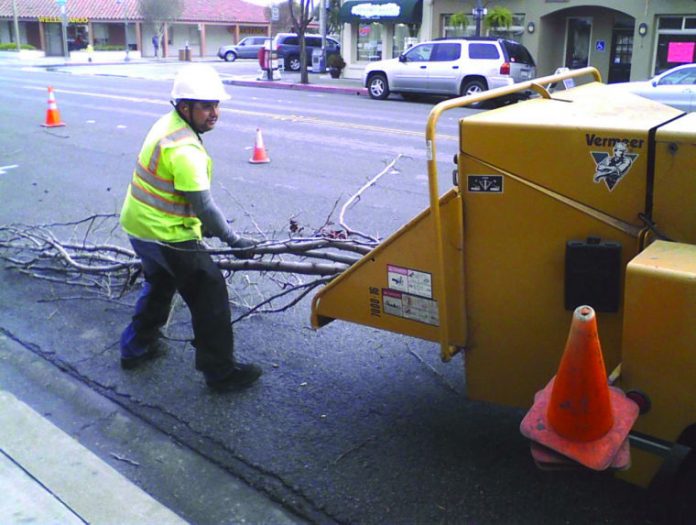During November and December, the rainy season showed promise for San Benito County’s core industry, agriculture. November brought 2.3 inches at the San Benito County Water District office and another 3.6 inches the following month.
In the end, those months were nothing but a tease. As was the case in the Bay Area, a good start to the winter turned to a relative dry spell from January through now – and probably a meager rain total for the near-finished season. So far, about 6.5 inches have fallen at the water district, said district manager Jeff Cattaneo.
The totals fluctuate throughout the county due to varied altitude, while that 6.5-inch total is slightly more than half of the 11- to 13-inch average here.
Although the county still does receive imported federal water, the relatively lower rainfall – and nearly completely diminished reservoirs – could result in future adjustments for many farmers, who may eventually be forced to use more of their well water, Cattaneo said. As usual, the lower rainfall has drastic impacts on the county’s ranching industry, with ranchers forced to ship cattle earlier than preferred.
County Agriculture Commissioner Ron Ross said there is a desperate need for more rain. He said he was recently in south county, where rangeland was “suffering” from a lack of moisture.
“This rain should’ve helped some,” Ross said, regarding the inch or so that fell last week, “but it appeared that with some of the grasses, it may have been too late. The unfortunate thing now, apricots and tree fruits will be blooming, and the rain will be dampening their fruit set.”
Ross said additionally, the county “didn’t get a whole lot” of cold weather in November and December. That means the apriocots are blooming now. He said cold weather is necessary to begin a uniform bloom. Without cold weather, the bloom is staggered, “which is less desirable for the fruit,” he said.
As for such fruit crops, the untimely weather prevents bees from pollinating the trees, Ross said. He said there’s a certain period, during the bloom, when the trees have to be pollinated.
On the fortunate side for many in the agriculture industry, though, the groundwater basin is full. Plus, the water district had a 54 percent blue valve allocation this season – more than twice the 25 percent federal allocation – due to additional storage from a prior year.
“Primarily because two years ago, when we got a lot of water, the district moved water around and stored it in different areas,” Cattaneo said.
He said “all bets are off” for next year, though.










